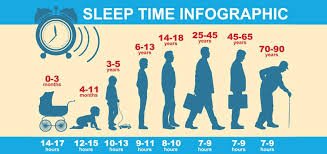Mindful Eating for Weight Loss:
Weight loss doesn’t always come down to strict diets, calorie counting apps, or trendy meal plans. Sometimes, the secret is simpler—and it’s about slowing down and listening to your body. That’s where mindful eating steps in.
Instead of obsessing over what you eat, mindful eating focuses on how you eat—helping you reconnect with hunger and fullness cues so you can eat with intention, not impulse. Over time, this practice not only supports weight loss but also rewires your relationship with food.
In this article, we’ll explore the principles of mindful eating, how to recognize true hunger cues, and practical tools like the hunger scale and eating exercises. By the end, you’ll have a step-by-step guide to make eating feel less like a battlefield and more like an act of self-care.
What Is Mindful Eating and Why Does It Matter?
Mindful eating is the practice of bringing full awareness to the experience of eating. That means:
- Paying attention to flavors, textures, and smells.
- Listening to your body’s hunger and fullness cues.
- Noticing emotional triggers that push you to eat when you’re not truly hungry.
- Letting go of judgment about “good” vs. “bad” foods.
Think of it as flipping the switch from auto-pilot eating to intentional eating.
And here’s the kicker: when you eat mindfully, you naturally eat less without feeling deprived. That’s why it’s such a powerful tool for weight loss and long-term health.
How to Recognize True Hunger vs. Emotional Hunger
One of the biggest challenges in weight loss is telling the difference between true physical hunger and emotional cravings.
Physical Hunger
- Builds gradually over time.
- You feel it in your stomach (rumbling, emptiness).
- Any food sounds appealing, not just one specific craving.
- Eating leaves you satisfied.
Emotional Hunger
- Comes on suddenly and feels urgent.
- Triggered by stress, boredom, sadness, or celebration.
- Cravings are for comfort foods (chips, sweets, pizza).
- Eating doesn’t satisfy—it often leaves guilt behind.
Tip: Next time you feel like grabbing a snack, pause and ask yourself: Am I physically hungry, or is this emotion-driven? That one mindful pause can prevent unnecessary eating.
Mindful Eating for Beginners: A Simple Guide to Weight Loss
If you’re new to mindful eating, start small. You don’t need to overhaul everything at once. Here’s a simple starter guide:
- Pause before eating: Take a breath and check in with your hunger level.
- Eat without distractions: No TV, scrolling, or multitasking.
- Chew slowly: Aim for at least 20–30 chews per bite.
- Use smaller portions: Start small—you can always get more if truly hungry.
- Check in mid-meal: Ask, Am I still hungry, or am I satisfied?
With practice, these small changes add up to big results.
Using the Hunger Scale for Effective Weight Management
The hunger scale is one of the simplest and most effective mindful eating tools.
Think of hunger as a scale from 1 to 10:
- 1–2: Starving, lightheaded, irritable.
- 3–4: Gently hungry, stomach beginning to signal.
- 5: Neutral—not hungry, not full.
- 6–7: Comfortably satisfied, energy feels steady.
- 8: Full, but not uncomfortable.
- 9–10: Overstuffed, sluggish, possibly regretful.
The goal? Eat when you’re around a 3–4 and stop at a 6–7.
Using this scale keeps you from waiting until you’re “hangry” (which often leads to overeating) or from eating past fullness.
5 Practical Mindful Eating Exercises to Stop Overeating & Binge Eating
Want to retrain your brain and body to eat mindfully? These exercises are a great place to start:
- The Raisin Exercise: Take one raisin (or small food item). Examine it, smell it, chew it slowly, and notice the textures. This exercise teaches presence with food.
- The Pause Method: Before taking a bite, pause for 5 seconds. Notice the food. Then eat. This simple gap prevents unconscious overeating.
- Halfway Check-In: Stop midway through a meal. Ask: How hungry am I now? Do I need more, or am I satisfied?
- Plate Awareness: Serve food on a smaller plate and eat with intention. Research shows smaller plates naturally reduce overeating.
- Eat with Non-Dominant Hand: Sounds silly, but it slows you down—forcing mindfulness with each bite.
Practicing even one of these exercises daily builds new, mindful habits.
How to Slow Down Your Eating and Feel Full Faster
Most of us eat way too quickly, which means our brain doesn’t have time to register fullness. The result? Overeating.
Here are ways to slow it down:
- Set your fork down between bites.
- Chew thoroughly. Aim for 20–30 chews per bite.
- Sip water during meals.
- Stretch mealtime to at least 20 minutes. That’s how long it takes for your brain to receive fullness signals.
Slowing down may feel awkward at first, but with practice, meals become more enjoyable—and overeating becomes less likely.
Intuitive Eating Principles for Sustainable Weight Loss
Mindful eating and intuitive eating go hand in hand. Intuitive eating is a philosophy built on 10 principles, but a few stand out for weight management:
- Reject the diet mentality. No more quick fixes or crash diets.
- Honor your hunger. Eat when you’re truly hungry.
- Make peace with food. No “good” vs. “bad” labels.
- Respect fullness. Stop when comfortably satisfied.
- Discover satisfaction. Eating should feel good—not rushed, not guilt-ridden.
By combining mindful eating with these intuitive eating principles, you set yourself up for long-term sustainable weight loss—not another short-lived diet cycle.
Mindful Eating at Restaurants: How to Enjoy Food Without Guilt or Overindulgence
Eating out is one of the toughest situations for mindful eaters. Big portions, tempting menus, and social pressure make it easy to overdo it. But you can still enjoy without guilt:
- Scan the menu mindfully: Ask, What do I really want? What will make me feel good after?
- Don’t show up starving: Eat a light snack beforehand to avoid “hangry” ordering.
- Share dishes or take leftovers: Portions are often huge—don’t feel pressured to finish everything.
- Eat slowly and enjoy the atmosphere. Remember, dining out is also about connection, not just food.
- Stop at satisfied, not stuffed. You can always take food home.
This way, restaurants become joyful experiences—not diet-destroying events.
The Benefits of Mindful Eating Beyond Weight Loss
While mindful eating supports weight management, its benefits extend far beyond the scale:
- Better digestion.
- Reduced emotional eating.
- Lower stress and anxiety.
- Improved satisfaction with meals.
- A healthier, guilt-free relationship with food.
That’s why mindful eating is more of a lifestyle shift than a diet hack.
Conclusion: Eating With Intention, Living With Balance
Mindful eating isn’t about perfection—it’s about awareness. It’s learning to recognize true hunger, respect fullness, and enjoy food without guilt. By practicing tools like the hunger scale, slowing down meals, and paying attention to emotional triggers, you can create a sustainable, balanced relationship with food.
Over time, weight loss becomes a natural byproduct of treating your body with respect, not punishment.
So the next time you sit down to eat, pause. Take a breath. Ask: Am I hungry? How much do I need? That tiny act of mindfulness could change the way you eat—and live—forever.
FAQs on Mindful Eating & Weight Loss
1. What exactly is mindful eating and can it really help with weight loss?
Yes! Mindful eating is simply paying attention while you eat—slowing down, noticing flavors, and tuning into hunger and fullness signals. Because it reduces overeating and emotional snacking, it naturally supports weight loss without the stress of dieting.
2. How can I tell if I’m truly hungry or just craving food emotionally?
True hunger builds slowly, usually comes with stomach rumbling or low energy, and can be satisfied with almost any food. Emotional hunger feels urgent, is often triggered by stress, boredom, or emotions, and usually craves specific comfort foods (like sweets or salty snacks).
3. What is the hunger scale and how do I use it?
The hunger scale is a tool that rates your hunger from 1 (starving) to 10 (overstuffed). The mindful eating sweet spot is starting a meal at around 3–4 (hungry but not desperate) and finishing at 6–7 (comfortably satisfied, not stuffed).
4. What are some simple mindful eating exercises I can start today?
Here are a few beginner-friendly ones:
- Put your fork down between bites.
- Chew each bite at least 20 times.
- Take a pause halfway through your meal to reassess hunger.
- Eat one meal a day without any screens.
- Try the “raisin exercise” (savoring one small bite of food with full awareness).
5. Why does eating slowly help me feel full faster?
Your brain needs about 20 minutes to register fullness signals from your stomach. If you eat quickly, you often overshoot that point. Slowing down—chewing thoroughly and savoring each bite—gives your body time to catch up, so you eat less but feel more satisfied.
6. Can mindful eating replace dieting for weight loss?
Mindful eating isn’t a diet—it doesn’t forbid foods or set calorie limits. But many people lose weight because it helps them stop eating on autopilot, break binge cycles, and actually enjoy smaller portions. For long-term weight management, it can be far more sustainable than restrictive diets.
7. What challenges do beginners face with mindful eating?
Common struggles include eating too quickly, forgetting to check in with hunger cues, and giving in to emotional cravings. The trick is to start small—pick one mindful habit at a time (like no screens at dinner) instead of trying to overhaul every meal right away.
8. How can I practice mindful eating when I go to restaurants?
Try these strategies:
- Don’t arrive starving (have a small snack before).
- Look at the menu and ask, “What will leave me satisfied without regret later?”
- Share dishes or ask for half-portions.
- Eat slowly and focus on conversation as much as the food.
- Stop when satisfied, and don’t be afraid to take leftovers.
9. Does mindful eating really reduce stress and emotional eating?
Yes. By slowing down, you become more aware of the emotions driving your cravings. Instead of automatically reaching for food, you can pause and ask: Am I hungry, or just stressed/tired/bored? That pause often shifts your choice—and reduces emotional overeating.
10. How can I check if I’m eating mindfully during a meal?
Ask yourself three quick questions:
- Before eating: Am I actually hungry, or just eating out of habit?
- During eating: How does this food taste and how hungry am I now?
- After eating: Do I feel satisfied and energized, or stuffed and sluggish?
Eating in sync with your body clock doesn’t just help your stomach — it also supports a calmer, more focused mind. If you want to explore more ways to care for your mental wellbeing, check out our full guide on practical tips for better mental health.
For more tips and support, visit our Facebook page.







